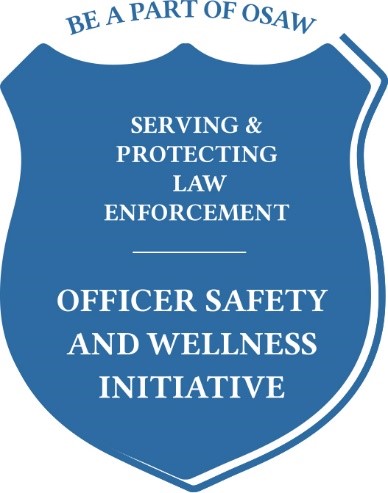Contact Us
To provide feedback on the Community Policing Dispatch, e-mail the editorial board at CPDispatch@usdoj.gov.
To obtain details on COPS Office programs, publications, and resources, contact the COPS Office Response Center at 800-421-6770 or AskCopsRC@usdoj.gov

U.S. Department of Justice
Office of Community Oriented Policing Services
Washington, DC 20530

The U.S. Department of Justice’s National Institute of Justice has funded a nationally representative study, the Officer Safety and Wellness (OSAW) Initiative, since 2017. This longitudinal study, conducted by the nonpartisan and objective research organization at the University of Chicago (NORC) in partnership with the Police Executive Research Forum, also includes input from a panel of nationally known experts. Further, the study is consistent with pillar 6 of President Barack Obama’s Task Force on 21st Century Policing, which encourages attention to the stressors, safety risks, and resilience of officers dedicated to law enforcement.
The OSAW Initiative collects data from thousands of officers randomly selected from a probability-based sample of municipal, county, Bureau of Indian Affairs, and state police/highway patrol law enforcement agencies around the United States. Thanks to participating officers, for the first time nationally representative data on officers’ exposures to incidents—while on or off duty—are being documented. Officers report on exposures such as life-threatening high-speed chases or collisions, involvement in a hostage situation, or a policing mistake that resulted in injury or death. Other items query whether officers have been sued for an action related to their police work, threatened with a toxic substance, or sexually harassed or assaulted by another officer. Collectively, officers answer questions about approximately 32 potential exposures during their careers. In addition, data are collected about individual officers’ current and past shift work assignments, building on evidence from both policing and other sectors about the deleterious impact of shift work on health outcomes.
Participants in the OSAW Initiative also report on protective factors such as their resiliency and the social support of family, friends, and communities. Officers indicate what their go-to coping strategies are, from a list of more than 25 options such as phoning a friend, analyzing a problem before reacting, going to the gym/exercising, or vegging out (TV, internet, etc.).
Considering these risk and protective factors, researchers can investigate the health and wellness profiles of the OSAW Initiative participants including common medical diagnoses (e.g., hypertension) and common physical ailments (e.g., back pain). Further, psychological health (e.g., perceived stress, anxiety, depression, suicidality) and behavioral patterns (e.g., alcohol and other drug use, diet and exercise) can also be evaluated. OSAW results are useful to better understand how to support officers to improve and maintain their health. A column in the October 2021 issue of Police Chief magazine summarizes some of the early OSAW findings. More detailed results have been published in several academic journals. As an example, Police Quarterly published a study of officer profiles based on baseline OSAW Initiative data, finding that officers could be categorized as healthy (68.3 percent) or reporting moderate health concerns (25.8 percent) or broad health concerns (5.9 percent) (see figure 1).
Understanding how to help officers optimize and maintain their health is important not only for the officers themselves but also for their families and communities. When we pay attention to the safety and wellness of officers, then they are likely to be in a better position to pay attention to the safety and wellness of the communities they serve.

Measures of perceived stress and attention, executive functioning, and memory deficits are rescaled to 0–100. Source: Elizabeth A. Mumford, Weiwei Liu, and Bruce G. Taylor, “Profiles of U.S. Law Enforcement Officers’ Physical, Psychological, and Behavioral Health: Results from a Nationally Representative Survey of Officers,” Police Quarterly 24, no. 3 (2021), 357–381, https://doi.org/10.1177/1098611121991111.
Elizabeth A. Mumford, PhD
NORC at the University of Chicago
Sandra L. Ramey, PhD, RN
Associate Professor Emeritus
University of Iowa
Subscribe to Email Updates
To sign up for monthly updates or to access your subscriber preferences, please enter your email address in the Subscribe box.






